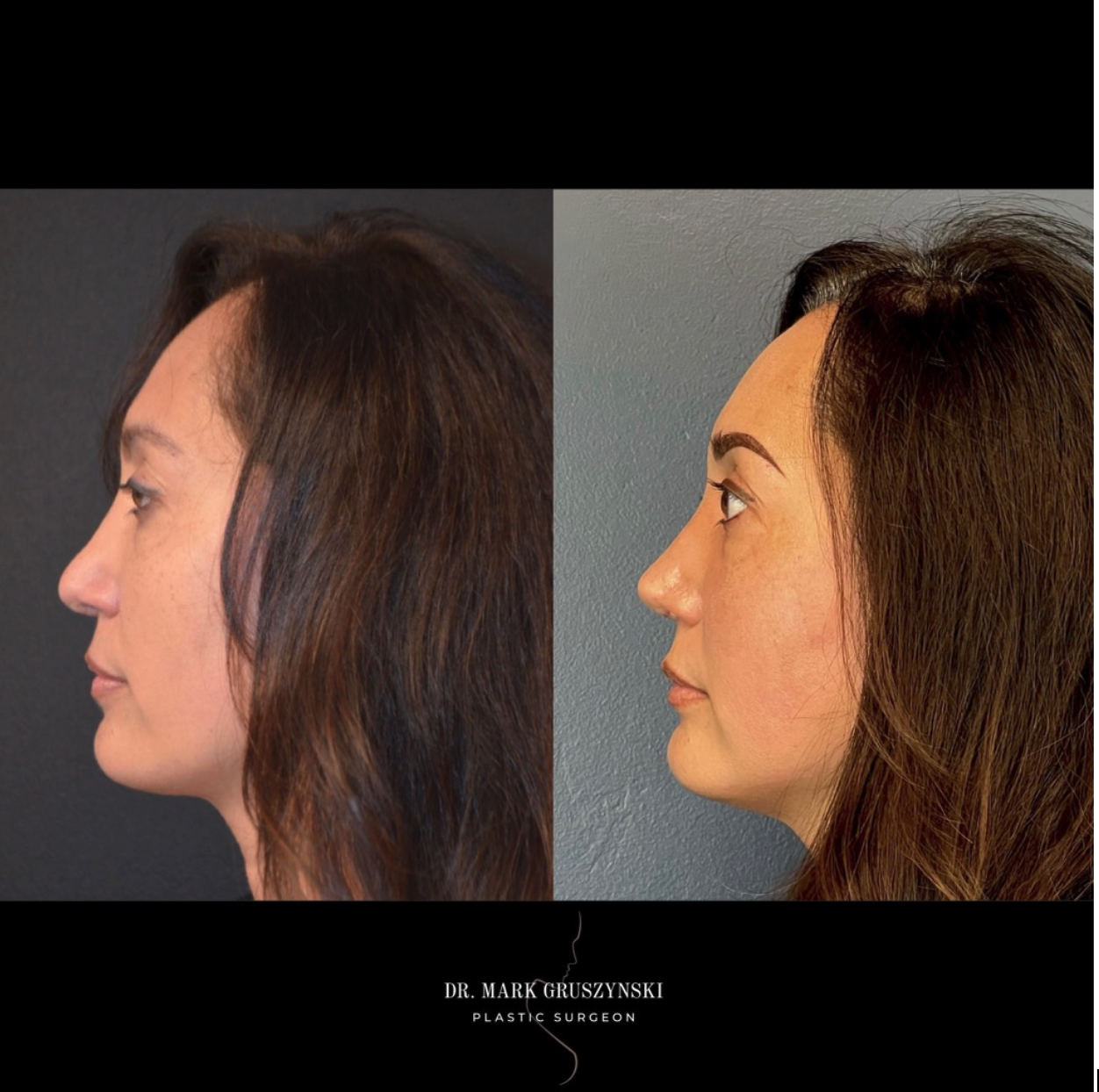
Revision rhinoplasty is undoubtedly the most challenging procedure performed by plastic surgeons and myself in my practice. Successful primary (first time) rhinoplasty depends upon leaving strong enough cartilage and bone support for a long-lasting result that resists the tendency for scar tissue to contract and warp. Even when executed well, primary rhinoplasty can have unpredictable negative long-term effects, such as supratip deformity (excessive fullness above the tip of the nose).
Failures of primary rhinoplasty can be aesthetic or functional. The same lack of robust support for the skin for the nose’s appearance can also result in a nasal collapse during breathing, particularly with exertion. Revision rhinoplasty is especially challenging because the straightest, strongest cartilage in the human body for shaping the nose is the nasal septal cartilage, which is almost always expended in a primary rhinoplasty. This leaves only the patient’s rib or ear cartilage, or donor rib cartilage, for restoring appropriate support to the nose. Unfortunately, rib cartilage tends to warp (it’s curved, to begin with!), and ear cartilage lacks the strength to support a contracted, scarred skin envelope.
Patients often ask if I am a cosmetic or reconstructive plastic surgeon. The reality is that plastic surgery training encompasses both aspects, and for a good reason! Revision rhinoplasty is equally a reconstructive procedure as it is a cosmetic procedure; that is, reconstructing the architectural structure of the nose to support an aesthetically pleasing AND functionally effective nose for breathing. Many surgeons will take on primary rhinoplasties and refuse revisions; I would argue that a Board Certified Plastic Surgeon that excels in both primary and revision rhinoplasty will have greater comfort and knowledge level to give you the result you desire in either.


